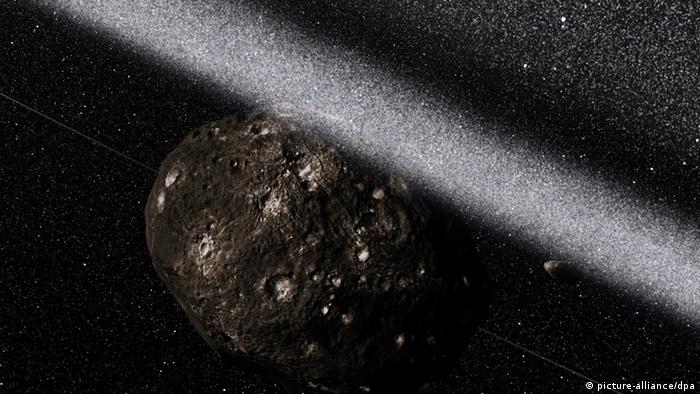
Two rings are made of cosmic dust and ice around an asteroid. The findings surprised the world of physics. Because of all this just gas giants are known to have rings.
It was not just Saturn and the other gas giants that bears cosmic ring. Because for the first time, astronomers observe asteroid orbiting ring. Chariklo the heavenly bodies named in the orbit around the sun between Saturn and Uranus, is more than a billion kilometers from Earth.
"This ring will be busy world physics for the next few years," said Colin Snodgrass from the Max Planck Institute for Solar System Research in Gottingen, Germany. To project the image of the sky tersebt he analyzes made at La-Silla Observatory the European Southern Observatory (ESO) in Chile.
For months Snodgrass and dozens of other hemisphere astronomers observing the movement Chariklo. Initially they just wanted to measure the diameter of the stone sky and with a little luck, to calculate the rotational speed.
"Big Surprise"
In astronomer June 3 last year at seven different locations in Chile, Brazil, Uruguay and Argentina, observing Chariklo when crossing the sun. They hope, sunlight flicker caused by a large asteroid could reveal Chariklo and shape.
Scientists have finally discovered something completely different. When analyzing the blinking light during the period of occultation, they saw two solid rings around Chariklo.
So far, only the giant planets such as Saturn, Jupiter, Uranus and Neptune are known to have a cosmic ring. "We are not looking for a ring because we do not think such a small celestial bodies Chariklo have it," said astronomer Brazil, Felipe Braga-Ribas. "This discovery was a huge surprise."
Looking for Chariklo Month
The outer ring Chariklo almost invisible. It is usually caused by the gravitational effect on planets orbiting moon. "Most likely Chariklo had sedikitinya one undiscovered small moon," said Braga-Ribas.
Chariklo innermost ring is estimated to have a width of 7 kilometers and the outer ring 3 Kilometers. Both rings are separated by a gap as wide as 9 Kilometers. "It's incredible that we were not only able to detect cosmic ring, but also observe the existence of two different rings," said astronomer Uffe Grae Jorgensen of the University of Copenhagen in Denmark.

It was not just Saturn and the other gas giants that bears cosmic ring. Because for the first time, astronomers observe asteroid orbiting ring. Chariklo the heavenly bodies named in the orbit around the sun between Saturn and Uranus, is more than a billion kilometers from Earth.
"This ring will be busy world physics for the next few years," said Colin Snodgrass from the Max Planck Institute for Solar System Research in Gottingen, Germany. To project the image of the sky tersebt he analyzes made at La-Silla Observatory the European Southern Observatory (ESO) in Chile.
For months Snodgrass and dozens of other hemisphere astronomers observing the movement Chariklo. Initially they just wanted to measure the diameter of the stone sky and with a little luck, to calculate the rotational speed.
"Big Surprise"
In astronomer June 3 last year at seven different locations in Chile, Brazil, Uruguay and Argentina, observing Chariklo when crossing the sun. They hope, sunlight flicker caused by a large asteroid could reveal Chariklo and shape.
Scientists have finally discovered something completely different. When analyzing the blinking light during the period of occultation, they saw two solid rings around Chariklo.
So far, only the giant planets such as Saturn, Jupiter, Uranus and Neptune are known to have a cosmic ring. "We are not looking for a ring because we do not think such a small celestial bodies Chariklo have it," said astronomer Brazil, Felipe Braga-Ribas. "This discovery was a huge surprise."
Looking for Chariklo Month
The outer ring Chariklo almost invisible. It is usually caused by the gravitational effect on planets orbiting moon. "Most likely Chariklo had sedikitinya one undiscovered small moon," said Braga-Ribas.
Chariklo innermost ring is estimated to have a width of 7 kilometers and the outer ring 3 Kilometers. Both rings are separated by a gap as wide as 9 Kilometers. "It's incredible that we were not only able to detect cosmic ring, but also observe the existence of two different rings," said astronomer Uffe Grae Jorgensen of the University of Copenhagen in Denmark.

So far scientists have not been able to uncover the origin of the ring around the Chariklo. Allegedly, the ring is formed after crashing Chariklo other celestial bodies and form a ring of dust and ice particles.